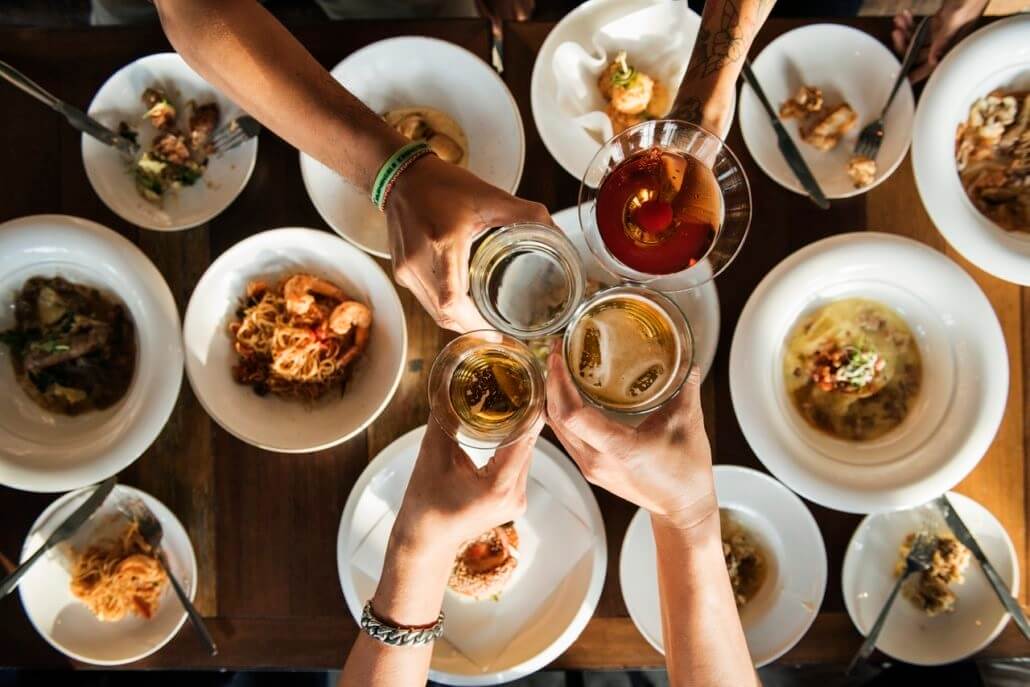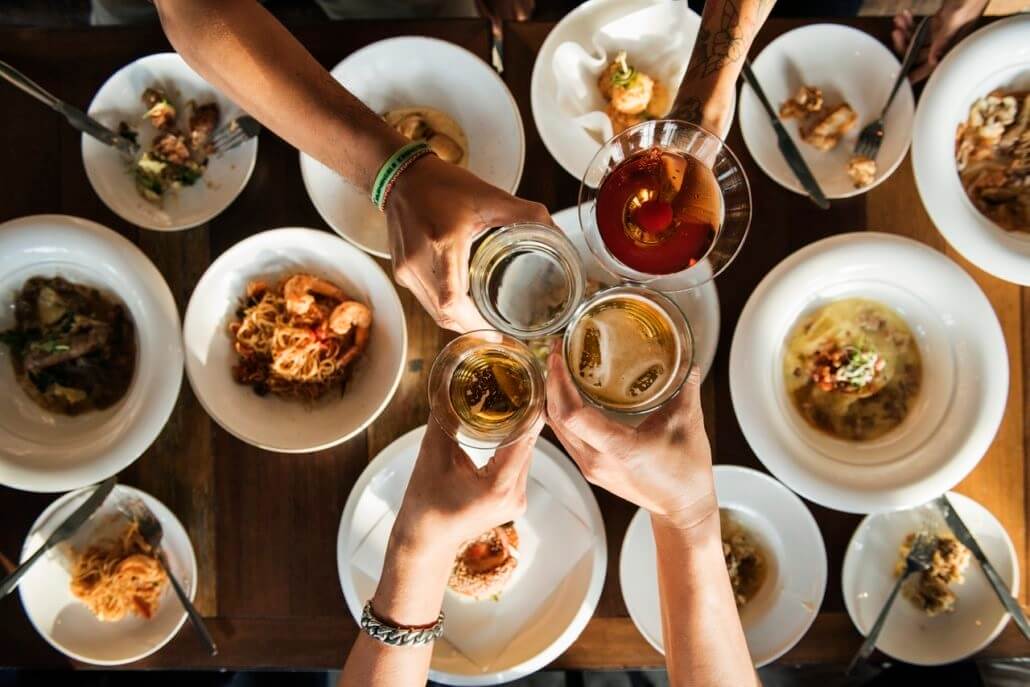
Top Ten Dining Trends for 2020 announced

2020 Top Dining Trends report was release today. The report is based on the current and upcoming trends observed by executive chefs and culinary experts at luxury hotels, resorts and restaurants coast to coast, off shore, and internationally.
2020 Dining Trend #1 | The Notorious C.B.D.
The CBD food trend has exploded in the last twelve months. Coffee shops and cafes in many American cities are now boasting a startling array of offerings infused with CBD oil, aimed at attracting customers interested in trying new eco-friendly, plant-based ingredients. Restaurants have also begun to incorporate the oil into their menus, both for drinks and food. What’s CBD or Cannabidiol? It’s a naturally occurring, non-psychoactive compound found in the resinous flower of Cannabis, a plant with a rich history as a medicine – going back thousands of years and known to reduce pain, stress and anxiety. CBD-infused drinks are also quickly gaining momentum as serious contenders in the popular beverage market, including sparkling waters, coffees, teas, energy drinks, beer, wine and mixed alcoholic beverages.
2020 Dining Trend #2 | The Incredible Sprouting Plant Ecosystem
More and more people are choosing to move away from beef, pork, and poultry, but honestly, these proteins aren’t going completely away any time soon. Many in society, though, are making a conscious decision to make a dietary switch into the plant-based ecosystem. Plant-based food alternatives are being provided for meat and dairy. They are using the art of cooking and food invention to recreate meat and dairy flavors from non-meat and non-dairy products like soy, peas, cashews, and almonds. In 2020, we expect this trend to grow rapidly. This culminates from years of research and studies, to make plant-based food items equally delicious and as desirable as real meat and dairy products. Many restaurants have encouraged veg-forward eating habits. By 2020, we predict that they will have a dedicated menu for plant-based food items.
2020 Dining Trend #3 | Puffed the Magic Snack
We have always been told chips are an unhealthy snack option and to stay as far away from them as possible. There are new products on the snack food market, however, that are providing healthier versions than chips. With ingredients like chickpeas, beets, quinoa, and kale, these snacks are going to make “snacking” alright even if you have the whole bag of chips. They may not be the most appealing aesthetically but are going to satisfy snack cravings effectively. Expect this crunchy trend to build in 2020.
2020 Dining Trend #4 | Jackfruit – Possible & Beyond
The newest go-to meat substitute is jackfruit. Already being used as an alternative for barbecue pulled pork, jackfruit is a southeast Asian fruit that is a great source of iron, calcium, and B vitamins. The texture of jackfruit mimics the texture of pulled pork and will soon become a force in the food industry as a meat alternative.
2020 Dining Trend #5 | Fruit Forward
Among the usual sweet flavors found on beverage menus, unique fruit flavors, such as cactus, are taking mixology ideation by storm. More specifically, spiny cactus fruits such as prickly pear and dragon fruit are peaking consumer interest. Prickly pears are a seeded fruit that yields an intensely flavorful ruby colored juice, while dragon fruit (AKA pitaya or strawberry pear) is also attracting the attention of consumers because of its sweet and sour flavor profile. Consumers are also exploring more unique fruit flavor varieties, including bergamot orange, yuzu, calamansi, citron, makrut lime, pomelo, Meyer lemon, blood orange and ugli fruit (a Jamaican form of the tangelo) to name a few.
2020 Dining Trend #6 | Dairy Remix
Step aside almond and soy, oat milk has emerged as the golden child of all the alternative milks. It’s terrific in coffees, and baristas can barely keep it in stock. So, it makes sense that companies are piggybacking off its success and launching other oat milk products as alternatives to dairy, to help minimize the environmental impacts associated with animal husbandry.
2020 Dining Trend #7 | Sparkling Results
Sparkling water demand is exploding, driven in part by consumers who are concerned about sugar but still looking to satisfy their craving for carbonation. Operators looking to harness these trends and turn them into more traffic or higher check averages should not only offer beverages that feature unique flavors, low-alcohol (or no-alcohol) sparkling waters and more, but they should also make sure to promote these types of drinks on social media. By ensuring diners – particularly younger influencers – know what new and exciting drinks are available, operators can count on attracting these new and affluent repeat beverage consumers.
2020 Dining Trend #8 | Bright & Bold
In terms of flavors and colors, consumers are looking for bright, bold, appealing hues. Color generates emotional appeal with food-it may be as important as taste. Skilled food and beverage operators have an eye for what beverages succeed on social media, where color is critically important, looking for products that are “Instagram-friendly”. Color and functionality collide with ingredients such as blue algae, beet, matcha, butterfly pea flower tea – popular in Southeast Asia. Butterfly pea flower tea is high in antioxidants and naturally changes color from blue to purple when acidity is added to it.
2020 Dining Trend #9 | More Traceability
As news about climate change, disappearing rainforests and plastic in the oceans dominate the news cycle and our social feeds, consumers are demanding sustainability in all forms of packaging – quickly making this integral to today’s food and beverage operating model. Whether it’s swapping out Styrofoam and plastic for paper or bamboo, or buying ingredients from sustainable sources, sustainability will sweep the entire industry in 2020. The heightened focus on single-use plastics is not just a fad but a reality that goes beyond the purge of the plastic straw.
2020 Dining Trend #10 | Ugly Produce
Food is a terrible thing to waste. It’s bad for people and the planet, and yet 40% of all the food produced in the US goes uneaten because it is imperfect. From farms to fridges, food waste is a massive problem that has infiltrated every level of our food system. Now, consumers are finally accepting misshapen, bruised, and just down-right ugly foods as totally edible. Start-up food companies that send boxes of said fruit and vegetables directly to the customer’s home will encourage consumers to buy produce that is nutritious and tastes fine, but is physically flawed in some way.
Readers currently looking at this article or page:
52
